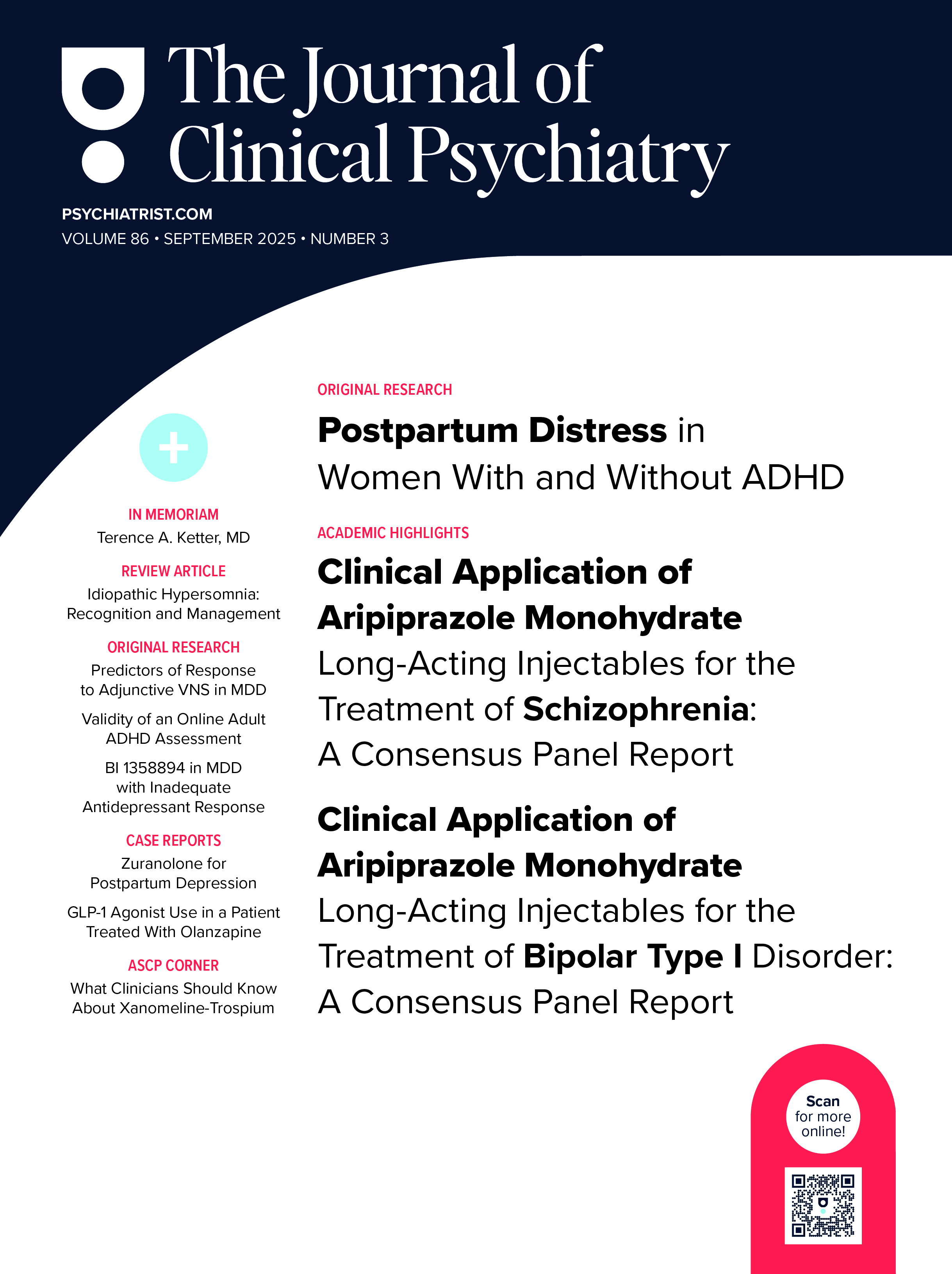Objective: To evaluate the extent to which cognitive measures in the recently developed THINC-integrated tool (THINC-it) are associated with global and domain specific psychosocial disability in patients with current and remitted major depressive disorder (MDD).
Methods: Cross-sectional data (N = 127) were obtained from participants with current (n = 105) or remitted (n = 22) MDD who completed the THINC-it between July 2014 and June 2018. Major depressive disorder was diagnostically assessed with DSM-IV and DSM-5 criteria. The THINC-it includes 4 objective cognitive tests: the Spotter (ie, Choice Reaction Time), Symbol Check (ie, n-back), CodeBreaker (ie, Digit Symbol Substitution), and Trails (ie, Trail Making Test part B), as well as a measure of self-perceived cognitive deficits, the Perceived Deficits Questionnaire for Depression-5-item (PDQ-5-D). Psychosocial dysfunction was assessed with the Functioning Assessment Short Test.
Results: The whole group analysis (ie, lifetime MDD) indicated that poor objective cognitive performance on the CodeBreaker (β = 0.346, P = .002) and Trails tasks (β = 0.232, P = .017) and greater self-reported cognitive deficits on the PDQ-5-D (β = 0.596, P < .001) were associated with more severe global psychosocial disability. In addition, performance on the CodeBreaker and Trails tasks showed dissociable relationships with specific psychosocial deficits (eg, occupational functioning, daily autonomy). The relationship between cognitive and psychosocial deficits was stronger in participants with current compared to remitted MDD.
Conclusions: Cognitive deficits identified by the THINC-it are associated with global and specific psychosocial deficits, highlighting the clinical value and utility of the THINC-it as a cognitive screening instrument in patients with MDD.
Members Only Content
This full article is available exclusively to Professional tier members. Subscribe now to unlock the HTML version and gain unlimited access to our entire library plus all PDFs. If you’re already a subscriber, please log in below to continue reading.
Please sign in or purchase this PDF for $40.00.
Already a member? Login





